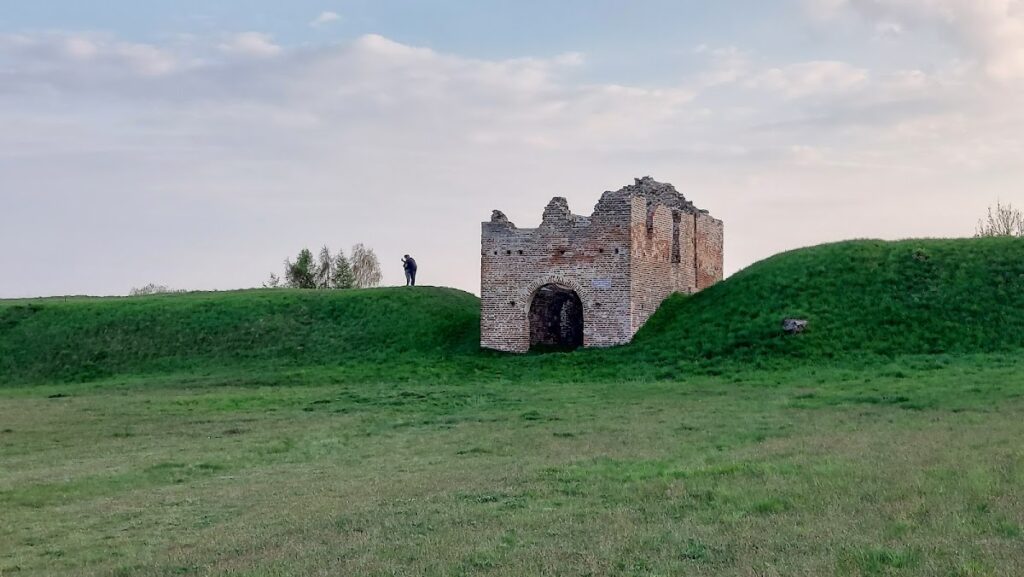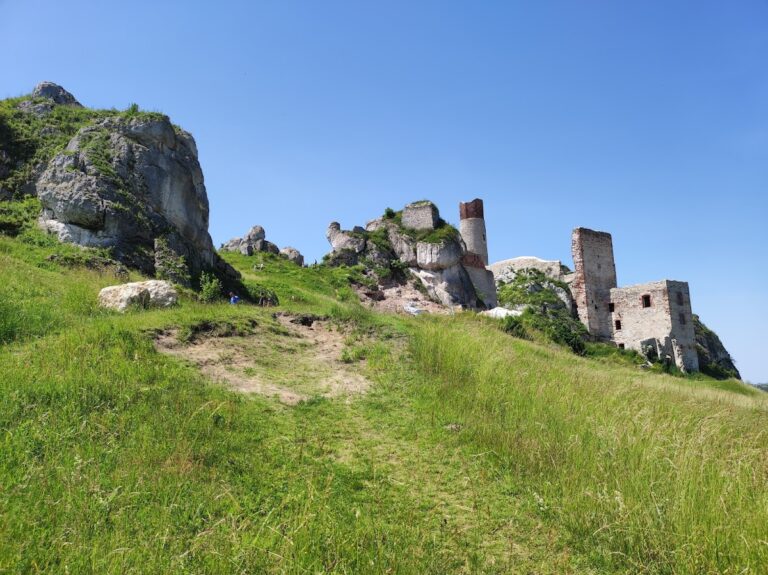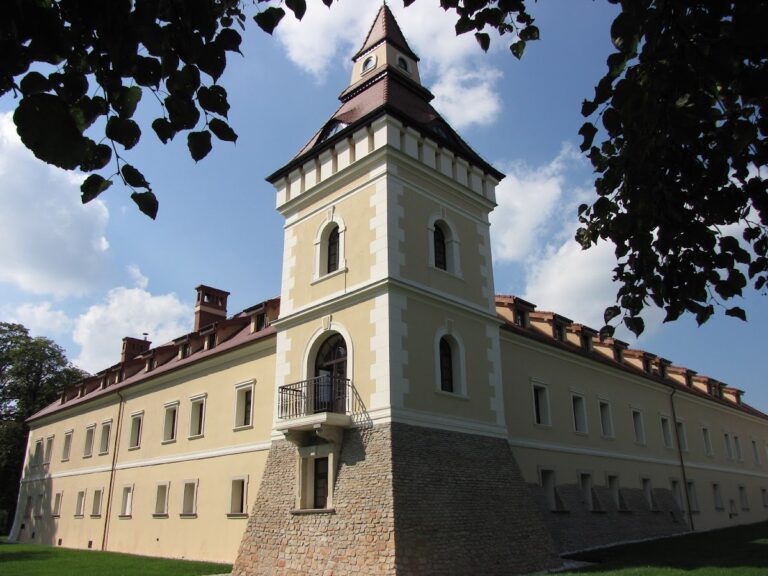Danków Castle: A 17th-Century Bastion Fortress in Poland
Visitor Information
Google Rating: 4.4
Popularity: Low
Google Maps: View on Google Maps
Country: Poland
Civilization: Unclassified
Remains: Military
History
Danków Castle is situated in the village of Danków in Poland. It originated as a fortress built by the Polish state during the 17th century, on the grounds where an earlier medieval knightly castle once stood. This location, along the Liswarta River, was historically significant as a meeting point on the route connecting Greater Poland and Lesser Poland.
The earliest records linked to Danków date back to 1217 when prominent Polish rulers such as Leszek the White, Henryk the Bearded, and Władysław Laskonogi gathered there for a political meeting. Throughout the 13th century, Danków served as a site for several important assemblies among dukes of the Piast dynasty, including the forging of alliances and arranging marriages. Though some historical accounts occasionally confuse Danków with other places of similar name, its position at the border of Lesser Poland, Greater Poland, and Silesia secured its strategic importance in medieval politics.
During the 15th and 16th centuries, the castle and surrounding settlement came under the ownership of noble families such as the Hińcza family and later the Kobylański family. Between 1540 and 1565, Renaissance poet Krzysztof Kobylański held ownership. The castle at this time had likely evolved from a modest defensive stronghold or a stone tower into a Renaissance-style manor residence, reflecting changing architectural tastes and defensive needs.
In 1581, the Warszycki family acquired Danków. Tradition holds that in 1609 during the Zebrzydowski Rebellion, Crown Treasurer Stanisław Warszycki welcomed King Sigismund III Vasa at the castle for a three-month stay, although this episode is not definitively confirmed by contemporary records. Around 1632, Stanisław (III) Warszycki initiated the construction of modern bastion-style fortifications around the site, drawing on Dutch and French military engineering methods. Despite these ambitious defenses, a planned stone residential palace was never completed.
Danków Castle played a notable role during the Swedish Deluge between 1655 and 1660, as it was among the few Polish fortifications that resisted capture. The strong bastion walls and ample supplies likely contributed to its endurance. In 1657, the castle served as a royal residence and center for political activity when King John II Casimir, Queen Marie Louise Gonzaga, and other military leaders used it during their return from Silesia.
Ownership of the castle changed hands several times thereafter, passing to Michał Warszycki and Stanisław (IV) Warszycki, and later to families such as the Pociej and Poniński. By the late 1760s, the castle was reported as ruined and deserted. A fire ignited by lightning further destroyed remaining structures. In the 19th century, Joachim Kempner took possession of the estate.
Excavations conducted in 2014 revealed evidence of human presence prior to the bastion fortress, but did not provide clear proof of the earlier Gothic-Renaissance castle. Historical sources have yet to confirm the existence of a medieval stronghold in the exact location of the later fortress.
Remains
The visible remains of Danków Castle reflect its design as a 17th-century bastion fortress, incorporating earthworks faced with brick walls. This style of fortification follows combined Dutch and French designs developed by engineer Jean Errard de Bar le Duc. The fortress includes a series of bastions—projecting parts of the defensive walls—and wide moats that once encircled the site, forming a formidable barrier to attackers.
Among the surviving structures is the Krzepicka Gate, the estate’s main entrance, which stands in a ruined condition. On the northern side, there is a rear gate designed as a tunnel, known in military architecture as a poterna—a discreet passage allowing movement between the fortress interior and the outside. A fragment of a stone wall remains from a rectangular building once identified as the “Castellan’s House” or lamus, possibly incorporating walls from an earlier structure.
On the eastern side, a substantial artificial lake once enhanced the fortifications by providing natural defense, although this feature was removed in the 1970s. Some brick facades and fortification elements underwent partial restoration during that decade, helping to reveal the extent of the defensive network.
The most prominent preserved edifice within the complex is the brick Church of St. Stanislaus, believed to have been constructed in the mid-17th century under the patronage of Castellan Stanisław Warszycki. This church contains the tomb of Andrzej Warszycki, who died in 1615 and was father to the castle’s builder. Archaeological research, however, has not confirmed the presence of medieval castle remains within the church or elsewhere on the site.
The castle complex included a wooden main residential building predating the bastion walls, as well as a brick kitchen building and the lamus. No completed stone palace was built at Danków. Today, the ruins and the outline of moats and bastions remain visible, preserved as a historic monument and bear witness to the castle’s layered history.










